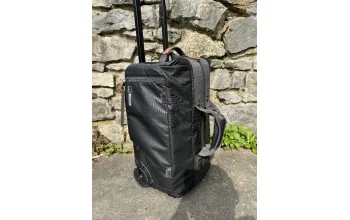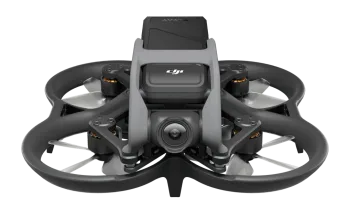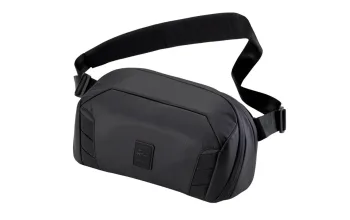As we get more and more festooned with beeping and buzzing 'essentials' on our trips, so the need to keep them topped up becomes more pressing. On longer trips into the backwoods you might have a GPS, a camera, a phone and more to keep on the go, that needs a chunk of power.
One solution, if your destination weather is suitable, is a solar panel but that generally requires you to be charging when the sun is out - and that is why we got interested in this clever setup from power-independence company, Goal Zero.
The 7 watt Nomad panel, folding away to around 230x160mm by 25mm thick can easily be tucked down the back of a hydration pack or pannier, so it is handy enough but does weigh in at 450g on its own. Pretty weighty, but manageable if you do need kit topped up independently.
7 watts in full sun was enough to charge our Huawei P10 at a decent clip - not rapid charging, but in theory a few hours should see the battery full. Unfortunately in our test climate - Scotland - we haven't had a great deal of 'full sun' days to really get the amps flowing.
That is where the Venture 30 battery pack comes in. Of course you could partner the Nomad 7 with any USB based battery pack you like, but the Venture 30 is a pretty impressive ruggedised unit, with a size and capacity pretty well balanced for carrying for long distances. Coming in at 80x115mm by 24mm thick it always found a place in our kit without a problem, and with 7800mAh @3.7V it had enough to comfortably fill our power-hungry smart phones around twice at a pinch. Short micro and full size USB cables are built in and rubberised for protection, and the whole battery is IPX6 rated for weatherproofing. It even has a little light built in, although this is only really strong enough for reading or moving around the tent at night.
We found a long day in bright but cloudy weather would likely not fill it much more than half, but around 5 hours in strong sun would see all 5 LED capacity indicators winking, and you would have the rest of the day to top up other items if need be. As with all battery packs, if you got into a cafe or other place where a USB socket was available, the Venture could top up from that too.
The great thing about using the battery pack was the ability to store power through the day and hook up gizmos at night, meaning there was no juggling of fragile phones or taking GPS units out of eyeline when they were being topped up. Just connect the battery pack to the Nomad 7, zip it into the neat zipped enclosure on the back and secure the panel to your luggage to collect power. At all the corners on the panel there are handy paracord loops for securing, and we found our bar pack was the ideal place to leave it for the day, but if you had a rear rack or even backpack it could be easily strapped on with mini-bungees or straps.
A great combination that should keep you power-independent on your travels, but if the weather isn't great don't expect too much from the solar panel. That is an important factor to consider if you are looking at solutions for a trip, as if the weather is dull you really aren't going to be generating anything meaningful from the solar panel. For example, bright days in the UK? Absolutely, it works. An overcast winter day in the UK? You'll get a small dribble, basically nothing. Think where and when you would be using it and judge whether that works for you or not.




















